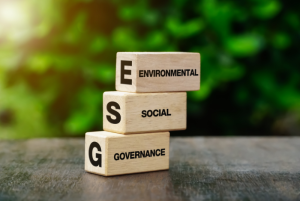Climate change is accelerating, and with it comes growing climate risk. No organisation is immune to it; businesses must recognise that this is one phenomenon that will impact them tremendously unless they set measures in place to help them cope. But what is climate risk, and how can businesses survive it? Adopting a business approach may be one way for firms to apply mitigative measures. Climate risk has the potential to damage the environment and impact adversely on lives, livelihoods, population health and well-being; damage assets and infrastructure, disrupt the supply chain, and cause investments to decline in value over the long term.
All businesses face climate risk in varying degrees. This can depend on the type of industry they operate in, where they are physically sited, and what regulations they are required to adhere to. Generally, however, there are two general categories of climate risk challenging businesses today: transition risk and physical risk. Transition risks are those risks which confront organisations that have opted to transition to a lower-carbon economy, while physical risks directly impact the business because of climate change.
If they succeed in reducing their carbon footprint and increasing their use of renewable energy, however, they may find opportunities opening up for them. As they make efforts to align and adapt their processes and systems with better, sounder ecological methods, they may develop more effective ways of utilising resources and saving costs, or even develop new products and services to meet the demands of different markets. Taking this business approach to climate risk may cause stakeholders to sit up and take notice, and gain confidence in the organisation. Positive public perceptions of the organisation may even increase, strengthening its reputation.
With transition risks, firms may find themselves putting out more funds initially, as they change the way they use energy from higher carbon emission sources (such as the national grid) to lower-emission sources (like solar power). But with physical risks, like floods which occur because of climate change, for instance, an organisation’s assets may suffer damage, such as damage to its premises, machinery, inventory, stocks of raw material, or fuel reserves. This has extensive financial and supply chain implications. Business operations will be impacted, and repair costs may erode profits. But so will measures like installing new systems not previously budgeted for.
Foregoing such changes may affect their competitiveness and decrease the value of the company in the long term. Regardless of which approach they choose, businesses must come to terms with, and manage climate risk. The Task Force on Climate-related Financial Disclosure (TCFD) has pointed out that as climate change accelerates, climate risk will grow; the impact will be gradual but will escalate. Managing climate risk now, therefore, will support an organisation’s future resilience. Organisations should leverage on every opportunity to improve efficiency now, put new policies and processes in place, and develop new products that could help to future-proof the business.


























